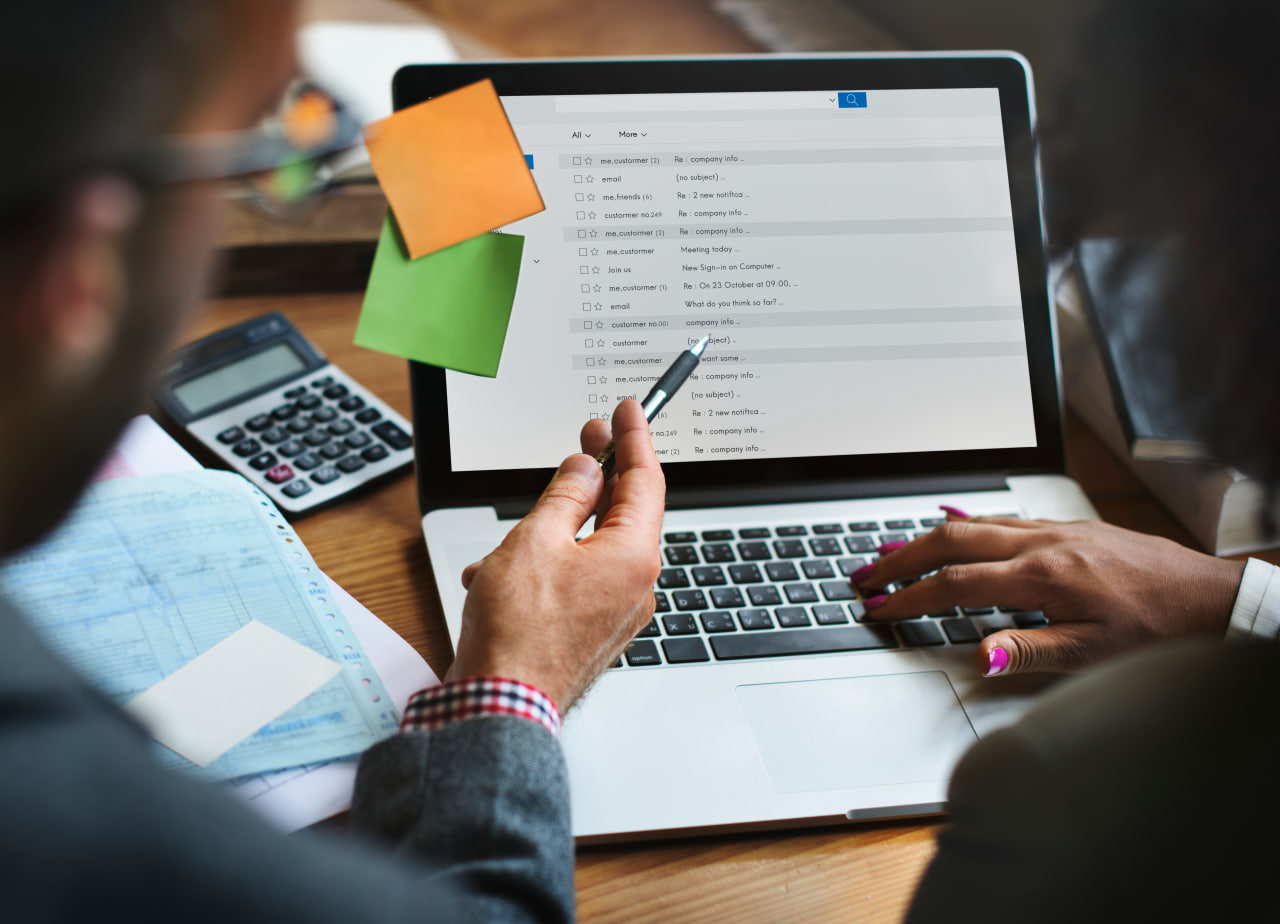Email Marketing Strategies for Effective B2B Lead Generation
Email marketing remains one of the most powerful tools for Business-to-Business (B2B) lead generation. Despite the surge of social media, paid ads, and other digital marketing techniques, email marketing has consistently proven its value in nurturing leads, engaging prospects, and converting them into loyal customers.
In this comprehensive guide, we’ll explore effective email marketing strategies tailored specifically for B2B lead generation. You’ll learn how to craft compelling emails, optimize your email campaigns, build strong relationships with leads, and measure your campaign performance to achieve long-term success.
What is Email Marketing in B2B?
Email marketing in a B2B context refers to the practice of using emails to communicate directly with business prospects, clients, and customers. Unlike B2C (Business-to-Consumer) marketing, where the goal is often to generate quick sales, B2B email marketing focuses more on building relationships, offering valuable insights, and nurturing leads through a longer buying cycle. The purpose is to engage decision-makers and influencers within organizations, driving them through the sales funnel.
Why Email Marketing for B2B?
B2B companies are always looking for ways to generate leads, nurture prospects, and ultimately close deals. Here’s why email marketing is critical for B2B:
- Direct Communication: Email allows for a direct line to decision-makers in your target companies.
- Cost-Effective: Compared to traditional methods like print advertising or cold calling, email marketing is relatively inexpensive and delivers measurable results.
- Personalization: Email marketing can be highly personalized based on data, behavior, and engagement, leading to more targeted messages and increased conversion rates.
- High ROI: Studies show that email marketing yields one of the highest returns on investment (ROI) in the digital marketing space. For every $1 spent on email marketing, businesses can expect an average return of $42.
Email Marketing Strategies for Effective B2B Lead Generation
Now that you understand the significance of email marketing in B2B lead generation, let’s dive into specific strategies that will help you achieve success.
1. Build a High-Quality Email List
The foundation of any successful email marketing campaign is a clean, segmented, and high-quality email list. You could have the best email content, but if you’re sending it to the wrong people, your efforts will fall flat.
How to Build an Email List:
- Offer Valuable Lead Magnets: Create downloadable content like eBooks, case studies, whitepapers, or templates that your target audience would find valuable. In exchange, ask for their email addresses.
- Host Webinars: Webinars are an excellent way to engage your audience and capture email addresses. Promote your webinars across various platforms and require email registration for access.
- Leverage Social Media: Use social media platforms like LinkedIn to drive traffic to landing pages where users can opt into your email list.
- Encourage Referrals: Create referral programs that incentivize current subscribers to refer others in their network to join your list.
Segment Your Email List:
Not all leads are the same, so segment your email list to send tailored messages. Categories may include:
- Industry
- Job Title (e.g., CEO, Marketing Manager, Sales Director)
- Company Size
- Purchase Intent
2. Personalize Your Emails
Personalization goes beyond just inserting the recipient’s name in the subject line. To create a meaningful connection with B2B leads, you must tailor your content to their needs, challenges, and interests.
Ways to Personalize:
- Dynamic Content: Use email marketing platforms like Mailchimp or HubSpot to personalize the email body, offering different content based on the recipient’s industry or behavior.
- Behavioral Trigger Emails: Send emails triggered by specific actions, such as a download, attending a webinar, or abandoning a cart on your website. This creates a timely, relevant communication that feels personalized.
- Use Custom Data: Leverage data such as the recipient’s company name, their recent interactions with your brand, or the specific products/services they’re interested in.
3. Craft Compelling Subject Lines
Your subject line is the first thing a recipient sees. It determines whether they will open your email or send it straight to the trash. A compelling subject line is essential for B2B email marketing.
Best Practices for Writing Effective Subject Lines:
- Keep it Short and Sweet: Aim for 6-10 words that are easy to read and convey a clear message.
- Use Actionable Language: Start with verbs like “Discover,” “Learn,” “Boost,” or “Improve.”
- Create Urgency: Phrases like “limited offer” or “only 24 hours left” encourage quick action.
- Avoid Spammy Words: Words like “free,” “cash,” and “urgent” can trigger spam filters, so avoid them.
4. Create Engaging Email Content
In B2B email marketing, content should provide value, not just a sales pitch. It should resonate with the challenges or goals of your audience, guiding them through the buyer’s journey.
Types of Email Content:
- Educational Content: Share case studies, blog articles, eBooks, and whitepapers that educate the prospect and help them make informed decisions.
- Product Demos and Trials: Offer free trials or product demos to prospects who are closer to making a purchase.
- Customer Success Stories: Use testimonials and case studies to highlight the benefits of your product or service in action.
- Exclusive Offers: Provide exclusive discounts, early access to new features, or limited-time offers to create an incentive for leads to engage.
5. Automate Your Email Campaigns
Automation plays a crucial role in nurturing B2B leads efficiently. With the help of email marketing software, you can set up automated email workflows to nurture leads at different stages of the sales funnel.
Types of Email Automation:
- Welcome Email Sequence: Send a series of emails to new subscribers that introduce your brand, your values, and your offerings.
- Lead Nurturing Sequences: Set up automated sequences based on the lead’s actions (e.g., downloading a piece of content or visiting a product page) to move them closer to a conversion.
- Re-engagement Campaigns: Reach out to inactive leads with special offers or personalized content to win them back.
6. Optimize for Mobile Devices
In 2025, most people check their email on mobile devices. A significant portion of your audience will read emails on smartphones or tablets, so it’s essential that your emails are mobile-responsive.
Mobile Optimization Tips:
- Keep the Design Simple: Avoid clutter and ensure that your content is easy to read on smaller screens.
- Use Single-Column Layouts: This ensures the email content displays properly across different mobile devices.
- Test Across Devices: Use email marketing tools that allow you to preview your emails on various devices before hitting “send.”
Measuring Email Marketing Success
To improve your email marketing strategy, you need to track and analyze key performance metrics. Here are the most important metrics to monitor:
- Open Rate: Measures how many people opened your email. A low open rate may indicate weak subject lines or poor list segmentation.
- Click-Through Rate (CTR): Measures how many recipients clicked on the links within your email. It reflects how engaging and relevant your content is.
- Conversion Rate: The percentage of recipients who took the desired action (e.g., making a purchase, filling out a form).
- Bounce Rate: Measures the percentage of emails that couldn’t be delivered. A high bounce rate indicates issues with your email list quality.
- Unsubscribe Rate: If many recipients are unsubscribing, it might be a sign that your emails are irrelevant or too frequent.
Case Study: How XYZ Corp Boosted B2B Leads Using Email Marketing
The Challenge
XYZ Corp, a SaaS company specializing in project management tools, faced difficulty in generating consistent B2B leads. While they had a solid product, their email campaigns were not converting as expected, and they struggled with list segmentation and personalization.
The Strategy
XYZ Corp implemented the following email marketing strategies:
- Segmentation: They segmented their email list based on company size, industry, and role.
- Personalized Emails: They created personalized email content using dynamic fields, addressing the pain points of each segment.
- Behavioral Triggers: They set up automated emails triggered by user actions (e.g., signing up for a free trial or downloading content).
- Content Upgrade: They offered additional resources like webinars and case studies that aligned with their leads’ needs.
The Result
After 3 months of implementing these strategies, XYZ Corp saw:
- A 45% increase in open rates
- A 32% increase in CTR
- A 25% increase in qualified leads
Frequently Asked Questions (FAQ)
1. How can I start email marketing for B2B?
To start email marketing for B2B, first build a high-quality email list, create engaging and personalized content, and use email marketing software to automate campaigns.
2. What’s the best time to send B2B marketing emails?
The best time to send B2B emails is typically Tuesday to Thursday mornings, when recipients are most likely to be engaged and available to open emails.
3. How do I measure email marketing success?
Measure success through metrics like open rate, click-through rate, conversion rate, bounce rate, and unsubscribe rate.
4. Can email marketing be automated?
Yes, email marketing can be fully automated, including welcome sequences, follow-up emails, and behavioral triggers based on user actions.
5. How often should I send B2B emails?
The frequency depends on your audience and the content’s value, but once a week or biweekly is common for most B2B companies.
Conclusion
Email marketing remains an indispensable tool for B2B lead generation. By following the strategies outlined in this guide, you can enhance your email campaigns, nurture relationships, and drive more conversions. Always remember to focus on delivering value, personalization, and automation to create meaningful, long-lasting connections with your audience. With consistent effort, email marketing can significantly boost your B2B lead generation efforts and increase your ROI.






